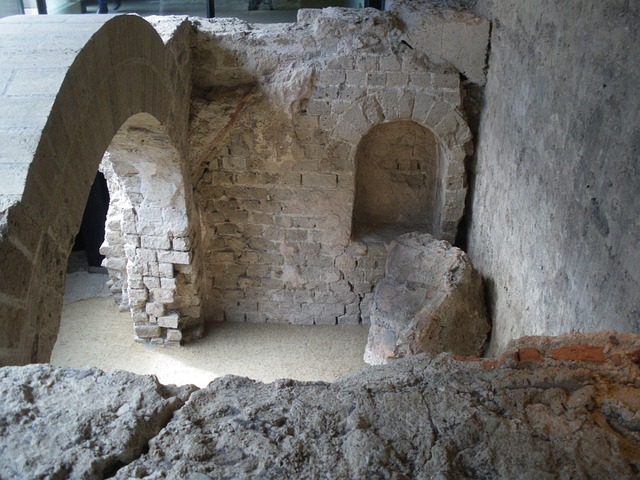Residential foundation cracks are a common issue caused by various factors. Visual assessment and precise measurements are key to identifying crack types (structural, settlement, differential movement). Non-invasive methods like polymer injections and structural patching offer cost-effective solutions for minor cracks. Severe cases require engineering interventions, such as carbon fiber wrapping or piering, for durable repairs. Hydraulic fracturing ("fracking") strengthens soil in challenging conditions. Preventive measures like proper drainage and soil management reduce crack formation. Adhering to building codes and understanding insurance claims facilitates effective Foundation Solutions. Regular maintenance and early intervention are crucial for long-term foundation health and stability.
Residential foundation cracks can range from harmless aesthetics to serious structural issues. Understanding common causes like soil movement, settling, or poor construction is key to effective foundation solutions. This comprehensive guide delves into various crack types, damage assessment techniques, and a spectrum of repair methods. From non-invasive minor crack fixes to advanced structural engineering and modern carbon fiber wrapping technologies, discover the best practices for addressing and preventing foundation cracks, ensuring your home’s long-term stability and value.
Understanding Residential Foundation Cracks: Causes and Types

Residential foundation cracks can range from hairline fractures to larger, more noticeable gaps, and they are a common concern for homeowners. Understanding the causes and types of these cracks is essential when considering foundation solutions. Several factors contribute to their formation, including soil movement, poor initial construction, settling, and changes in humidity levels.
There are various types of foundation cracks, each requiring specific attention. These include structural cracks, caused by significant shifts in the soil or improper building techniques; settlement cracks, resulting from the natural settling of the home over time; and differential movement cracks, which occur due to unequal shrinking or expanding of different parts of the foundation. Foundation solutions for these issues may involve repairs like carbon fiber wrapping, epoxy injection, or more extensive methods such as piering and underpinning.
Assessing the Extent of Damage: Visual Inspection Techniques

When assessing foundation cracks, a thorough visual inspection is the first step. This involves carefully examining the structure for any signs of damage, including hairline cracks, bulges, or uneven surfaces. Foundation solutions professionals often start with a detailed walk-around, looking for visible indicators that can reveal the extent and type of issue at hand.
Using specialized tools like level and laser measuring devices, they can then quantify the crack’s dimensions, depth, and pattern. This data helps in determining if the damage is cosmetic or structural and guides the selection of appropriate foundation solutions. Visual inspection techniques combined with accurate measurements provide a critical foundation for developing effective repair strategies tailored to each unique case.
Non-Invasive Repair Methods for Minor Cracks

For minor cracks in residential foundations, non-invasive repair methods offer a cost-effective and efficient solution. These techniques are designed to stabilise and strengthen the structure without causing additional damage or disruption to the home. One such method involves the use of polymer injections, where a flexible material is injected into the crack to fill it from the inside, preventing further expansion. This process is quick, clean, and requires minimal preparation, making it ideal for busy homeowners.
Another popular non-invasive approach is structural patching, which uses special compounds to fill small cracks and holes in the foundation walls. These compounds are tailored to mimic the properties of concrete, ensuring a strong and durable repair. By addressing minor cracks early on using these foundation solutions, homeowners can prevent more serious structural issues from developing, saving time and money in the long run.
Structural Engineering Solutions for Severe Foundation Cracks

When foundation cracks become severe, it’s crucial to turn to structural engineering solutions for effective and lasting repairs. In such cases, professional engineers assess the damage and recommend tailored interventions. One common approach involves the use of carbon fiber wraps or mesh, which are bonded to the cracked surface to provide additional strength and support. This method is particularly effective for preventing further crack propagation.
For more extensive damage, structural engineers might propose deep foundation solutions, such as piering or heap repair. Piering involves installing steel piers beneath the ground to stabilize the structure, while heap repair focuses on raising and supporting the foundation with new concrete or steel footings. These advanced foundation solutions are designed to mitigate settlement issues and ensure the long-term integrity of residential structures.
Carbon Fiber Wrapping: A Modern Approach to Crack Restoration

Carbon Fiber Wrapping is a modern and innovative approach to foundation crack restoration, offering an effective solution for homeowners seeking reliable foundation solutions. This method involves wrapping the cracked area with carbon fiber strips, which are then bonded with a specialized epoxy. The result is a strong, durable repair that not only fills the crack but also reinforces the surrounding concrete, preventing further damage.
This advanced technique is particularly advantageous as it provides a long-lasting fix, enhances structural integrity, and maintains the aesthetic appeal of the structure. Carbon Fiber Wrapping is especially useful for wide or deep cracks, offering a more comprehensive repair compared to traditional filling methods. It’s a smart choice for those looking for efficient foundation solutions that combine strength and aesthetics in crack restoration.
Hydraulic Fracturing: Paving Way for Stable Foundations

Hydraulic fracturing, or fracking, is a cutting-edge technology that has transformed the construction industry by offering innovative foundation solutions. This process involves injecting high-pressure fluid into deep cracks in the soil, propping them open and creating new paths for water, gas, and oil to flow. In the context of residential construction, fracking can significantly improve the stability and longevity of foundations.
When it comes to foundation solutions, hydraulic fracturing is particularly useful for areas with challenging soil conditions, such as expansive clay or weak compressible soils. By creating artificial cracks, it reduces the soil’s ability to swell or shrink, which are common causes of structural damage over time. This method not only strengthens the existing foundation but also paves the way for the installation of additional support structures, ensuring a robust and stable base for any residential building.
Cost-Effective Foundation Crack Prevention Strategies

Preventing foundation cracks is often a cost-effective solution compared to repairing them later on, saving homeowners significant expenses. One effective strategy is regular inspection and maintenance, especially in regions with expansive clay soils that are prone to shifting during dry and wet cycles. Regular monitoring allows for early detection of even the smallest cracks, enabling prompt action before they widen. Simple measures like ensuring proper drainage around the property, maintaining adequate soil moisture levels, and applying controlled water injections can prevent ground movement and subsequent foundation damage.
Another cost-effective approach is to improve the soil’s stability by incorporating products that enhance its structure. This method involves mixing specific amendments into the soil to increase its bearing capacity, preventing settlement and cracking. Foundation solutions professionals often recommend these techniques as a proactive measure, ensuring long-term structural integrity and eliminating the need for extensive repairs down the line.
Building Code Compliance and Insurance Claims

When addressing foundation cracks in residential properties, it’s crucial to consider building code compliance and insurance claims as part of the solution process. Different regions have specific building codes that dictate safe construction practices, including guidelines for foundation repairs. Foundation solutions must adhere to these codes to ensure structural integrity and prevent future issues. Non-compliance can lead to legal complications and financial penalties.
Insurance claims related to foundation cracks require careful documentation and evaluation. Homeowners should review their policy coverage, especially for structural damage. Many insurance providers offer comprehensive protection that includes foundation repairs as part of their claims process. Understanding the terms and conditions of your policy will help in navigating the claims procedure efficiently, ensuring a smoother transition towards effective foundation solutions.
Long-Term Maintenance Tips for Healthy Home Foundations

To ensure long-term health and stability for your home’s foundation, consistent maintenance is key. Regularly inspect your foundation for any signs of cracks, settling, or movement, as these could indicate underlying issues. Addressing problems early through professional evaluation and non-invasive methods like underpinning or piering can prevent more severe damage down the line.
Implementing preventive measures such as proper drainage around the foundation, maintaining adequate humidity levels within the home to avoid extreme shrinkage or swelling of materials, and securing loose soil near the structure are all part of a robust maintenance strategy. Staying on top of these tasks not only preserves your investment but also promotes the overall integrity of your home’s foundation solutions.
